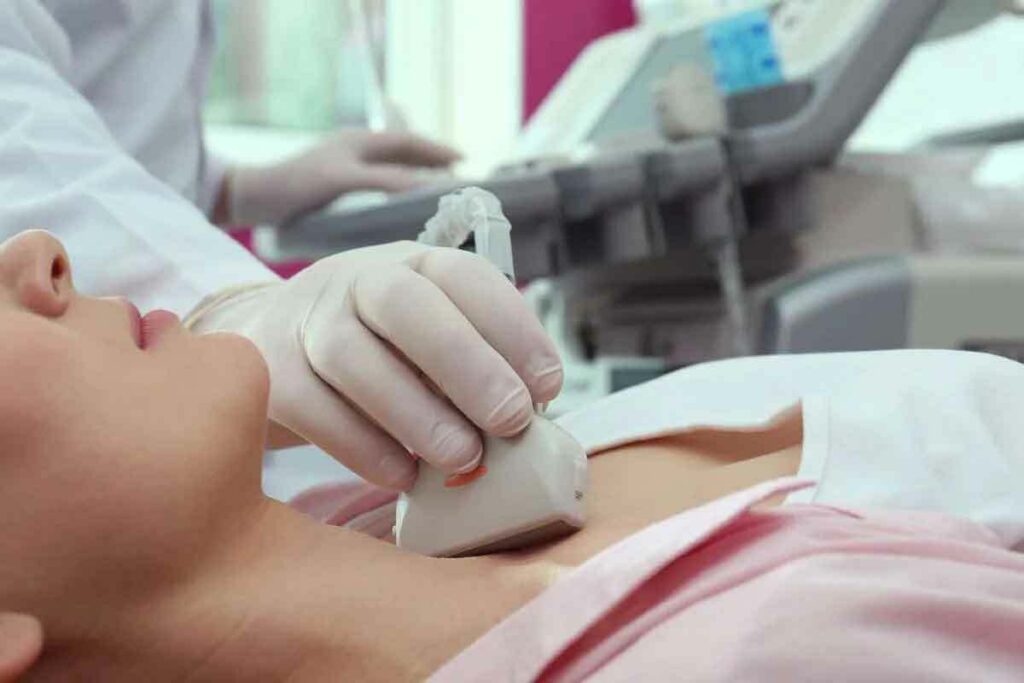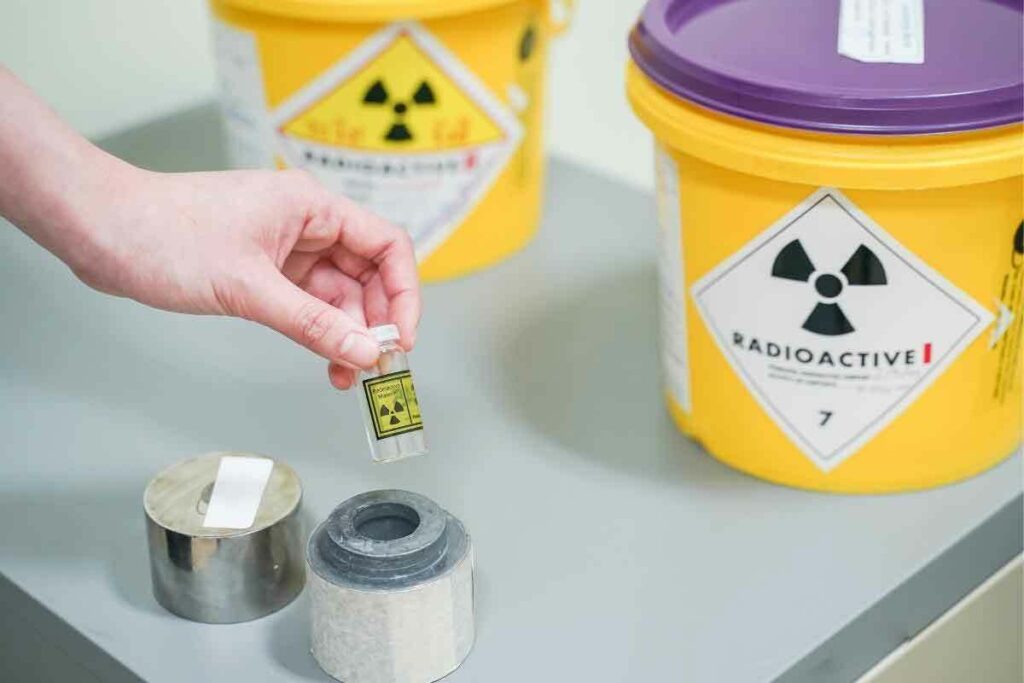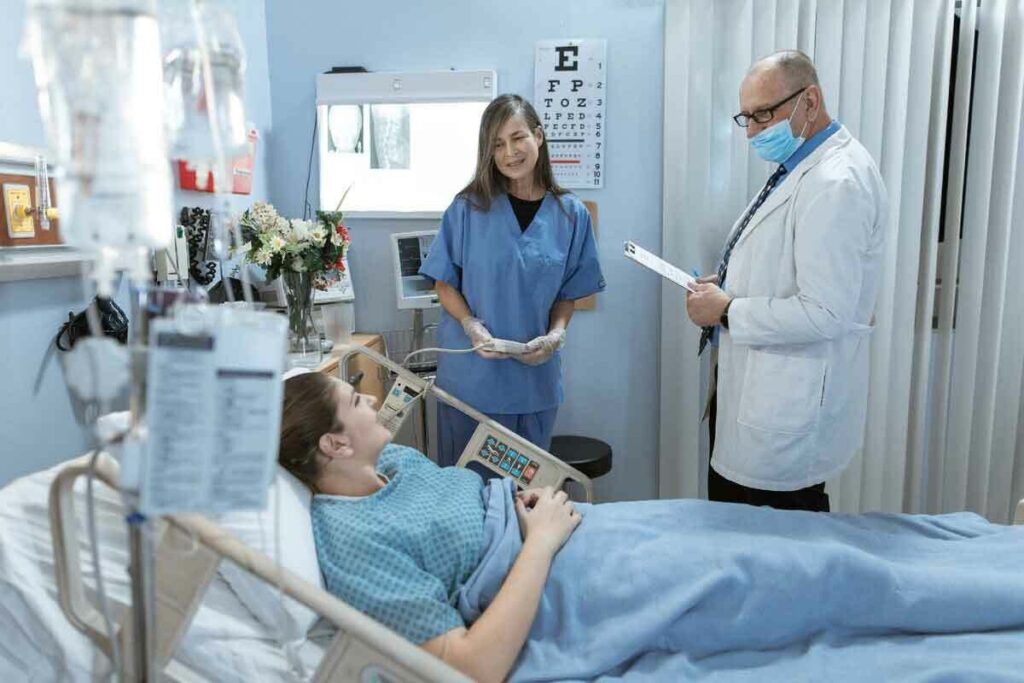
Radioactive iodine (RAI) is a common treatment for Graves’ disease and thyroid cancer. Studies show it doesn’t shorten life for most patients. It might even help some thyroid cancer patients live longer.
At LivHospital, we focus on our patients and the latest research. We answer big questions about life after RAI treatment. RAI is proven to work well for thyroid cancer, helping those with cancer or spread.

Radioactive iodine therapy is a common treatment for thyroid diseases like Graves’ disease and thyroid cancer. It’s a key method for managing thyroid conditions. It targets thyroid tissue precisely.
The treatment works because the thyroid gland absorbs iodine. Healthcare providers use radioactive iodine to send radiation directly to the thyroid. This reduces harm to other body parts.
Radioactive iodine therapy uses a radioactive form of iodine, like I-131, to treat thyroid diseases. When taken, it gets absorbed by the thyroid gland. There, it releases radiation that kills thyroid tissue.
This process can lower thyroid hormone production in hyperthyroidism or kill thyroid cancer cells.
RAI mainly treats Graves’ disease and thyroid cancer. For Graves’ disease, it reduces thyroid hormone production by destroying thyroid gland parts. In thyroid cancer, it kills remaining thyroid tissue after surgery, lowering cancer risk.
RAI’s success comes from its ability to target thyroid cells. Thyroid cells take in iodine, including the radioactive kind, through a special transporter. Inside, the radioactive iodine releases radiation that kills cells.
This targeted approach helps destroy thyroid tissue without harming nearby tissues. Understanding RAI’s mechanism is key for those considering it. It helps them make informed decisions about their treatment.

Graves’ disease is an autoimmune disease that affects the thyroid gland. It causes the gland to make too much thyroid hormone. This happens because of a mix of genetics, environment, and the immune system.
Graves’ disease makes the body produce autoantibodies. These autoantibodies tell the thyroid gland to make more thyroid hormones. This leads to hyperthyroidism, where the body’s metabolism speeds up too much.
The autoantibodies act like thyroid-stimulating hormone (TSH). They make the thyroid gland produce more thyroid hormones. This thyroid hormone overproduction causes many symptoms.
Graves’ disease symptoms include weight loss, fast heart rate, shaking, and feeling too hot. Doctors use a few ways to diagnose it. They look at symptoms, do blood tests, and sometimes use imaging.
| Symptom | Percentage of Patients |
| Weight Loss | 85% |
| Palpitations | 70% |
| Tremors | 60% |
Radioactive Iodine (RAI) is a common treatment for Graves’ disease. But, there are other choices too. These include antithyroid medications and surgery.
Each treatment has its own good and bad sides. The right choice depends on how bad the disease is, what the patient wants, and any other health issues.
When thinking about radioactive iodine treatment, knowing its effect on life expectancy is key. It’s often used for Graves’ disease and some thyroid cancers. This raises questions about its long-term effects.
Recent studies have looked into how RAI affects mortality rates. They found that for intermediate-risk thyroid cancer, RAI can cut mortality by 29-30 percent.
Evidence from clinical trials and observational studies shows RAI treatment doesn’t shorten life expectancy. It might even improve survival for certain patients.
It’s important to compare life expectancy before and after RAI treatment. Studies show patients treated with RAI often have similar or better life expectancy than those not treated.
A study on Graves’ disease patients found that life expectancy hyperthyroidism wasn’t worsened by RAI. In some cases, RAI can improve overall health.
Several factors can affect survival after RAI treatment. These include the condition being treated, patient age, and other health issues.
Understanding these factors is vital for patients and healthcare providers. It helps make informed decisions about RAI treatment and sets realistic expectations for life expectancy.
RAI therapy is a key treatment for thyroid cancer. It helps lower death rates and boosts long-term survival chances.
RAI treatment greatly lowers death risk in intermediate-risk thyroid cancer. It kills any leftover thyroid tissue after surgery. This stops cancer from coming back, raising survival chances.
Key benefits of RAI treatment in intermediate-risk cases include:
Research shows RAI treatment boosts five- and ten-year survival rates. Patients with thyroid cancer who get RAI treatment live longer than those who only have surgery.
| Treatment Approach | 5-Year Survival Rate | 10-Year Survival Rate |
| Surgery + RAI | 95% | 90% |
| Surgery Only | 85% | 75% |
RAI treatment with surgery beats surgery alone in survival benefits.
The addition of RAI therapy to surgical treatment has been shown to:
Adding RAI treatment to their care plan boosts thyroid cancer patients’ long-term survival. It also lowers the risk of cancer coming back.
Research shows a link between radioactive iodine treatment and higher risks of heart and brain problems. As RAI is used more for thyroid issues, knowing these risks is key for doctors and patients.
The first year after RAI treatment is critical. Patients might face a higher risk of heart and brain disease death during this time. Doctors should watch patients closely and manage heart risk factors well.
Long-term studies show that heart risks after RAI might decrease over time. But, some groups may stay at higher risk. They need ongoing heart health checks.
To lower heart and brain risks from RAI, several steps can be taken. These include lifestyle changes like better diet and exercise. Also, managing high blood pressure and cholesterol is important. Doctors and patients can work together to reduce these risks.
Understanding and managing the heart and brain risks of RAI treatment is vital. This way, doctors can help patients get the best results.
Radioactive iodine therapy is a common treatment for thyroid disorders. It’s used for Graves’ disease and thyroid cancer. But, there are long-term risks, like an increased chance of secondary cancers, that doctors and researchers are studying.
Studies have found a small but real risk of secondary cancers after RAI treatment. Long-term studies have highlighted a small but measurable increased risk of secondary solid cancers at standard RAI doses. The risk depends on the dose, the patient’s age, and any health conditions they might have.
Younger patients face a higher risk of secondary cancers from RAI. This is because they have more years of life ahead of them to develop these cancers.
Research shows that higher doses of RAI raise the risk of certain cancers. This includes leukemia and solid tumors. But, the exact relationship between dose and cancer risk is complex. It depends on the condition being treated and the patient’s health.
RAI treatment can also cause other long-term side effects. These include problems with salivary glands and tear ducts. There’s also a chance of thyroid hormone imbalance due to hypothyroidism, a common side effect.
Patients should watch for these side effects and talk to their doctors. Regular check-ups are important to manage any issues that arise.
It’s important to know about these risks and side effects before starting RAI treatment. Patients should talk to their healthcare provider about their individual risks and any concerns they have.
Graves’ disease treatment with radioactive iodine marks the start of a new chapter. Patients often feel a mix of emotions and physical changes. These changes are part of the journey after treatment.
Right after treatment, patients might feel neck tenderness or taste changes. These symptoms usually go away quickly. A leading thyroid association says most can get back to normal in a few days.
It’s important to follow your doctor’s advice during this time. You might need to eat a low-iodine diet and avoid close contact with others. This is true for a few days after treatment.
After the first few days, patients start adjusting to new thyroid function. They might start taking thyroid hormone replacement therapy. It can take time to find the right balance of hormones.
Seeing your doctor regularly is key during this time. They will check your hormone levels and adjust your treatment as needed.
Most patients with Graves’ disease who have had radioactive iodine treatment can live active lives. They will need to take thyroid hormone for life. The key is managing hypothyroidism well and regular doctor visits.
Research shows most patients don’t have lasting side effects from the treatment. But, they need to keep seeing their doctors. This is to watch for heart and brain risks.
| Aspect of Life | Immediate Post-Treatment | Medium-Term | Long-Term |
| Thyroid Function | Potential for neck tenderness | Adjustment to thyroid hormone replacement | Stable on thyroid hormone therapy |
| Lifestyle | Low-iodine diet, limited contact with others | Gradual return to normal activities | Normal life with regular follow-ups |
| Health Monitoring | Close follow-up for side effects | Regular thyroid hormone level checks | Ongoing monitoring for cardiovascular risks |
It’s important for patients and doctors to know how RAI treatment affects the thyroid. Radioactive iodine is used to treat Graves’ disease and some thyroid cancers. But, it can really change how the thyroid works.
After RAI, the thyroid gland often gets damaged, causing hypothyroidism. So, thyroid hormone replacement therapy is needed. This therapy uses synthetic hormones, like levothyroxine (T4), to replace what the thyroid can’t make.
The right amount of these hormones is found through blood tests. These tests check thyroid-stimulating hormone (TSH) levels. Adjusting the dosage keeps TSH levels normal, helping to reduce hypothyroidism symptoms.
It’s rare for the thyroid gland to grow back or work normally after RAI. The treatment kills thyroid cells, reducing function for most people. So, long-term hormone replacement is usually needed.
Managing hypothyroidism well is important for a good life after RAI. Regular TSH level checks help adjust hormone doses. Patients also get advice on lifestyle and diet to help their thyroid.
Knowing what to expect and how to manage hypothyroidism helps patients live well. They can stay active, even with lifelong hormone replacement therapy.
Graves’ disease is an autoimmune disorder that leads to hyperthyroidism. RAI treatment can manage it well. But, the question is, does it completely go away?
Most people with Graves’ disease won’t have active disease after RAI treatment. RAI destroys thyroid tissue, which lowers hormone production. But, it doesn’t stop the autoimmune process.
Studies show most patients become hypothyroid after RAI. They need thyroid hormone for life. This change shows RAI manages the hormone imbalance but doesn’t cure the disease.
Some patients might have persistent or recurrent Graves’ disease after RAI. Recurrence depends on the RAI dose, thyroid size, and other autoimmune conditions.
Graves’ disease is an autoimmune attack on the thyroid. Even with successful RAI treatment, patients might have thyroid antibodies. This shows the autoimmune activity continues.
Managing Graves’ disease long-term means watching thyroid function and being alert for other autoimmune diseases. People with Graves’ disease should watch for signs of other autoimmune disorders, like type 1 diabetes or rheumatoid arthritis.
Radioactive iodine treatment is a big deal for thyroid cancer and Graves’ disease. It has its ups and downs. Knowing how it affects Graves disease life expectancy and health is key for both patients and doctors.
RAI treatment can really help with thyroid issues. But, it’s important to think about each patient’s situation. Patients need to weigh the good and bad sides to decide what’s best for them. This means looking at long-term effects like heart risks and the chance of getting another cancer from radioactive iodine treatment.
Deciding on RAI treatment is a team effort between patients and doctors. Doctors can give personalized advice based on each patient’s needs. This helps patients make the best choices for their treatment.
Studies show that radioactive iodine (RAI) treatment does not shorten life. But, life expectancy can vary. This depends on the condition being treated and the patient’s overall health.
Usually, the thyroid gland shrinks or is removed after RAI treatment. But, in rare cases, some thyroid tissue might stay. This could lead to some thyroid function coming back.
Long-term side effects include a higher risk of cancers like salivary gland cancer and leukemia. These risks are low but present. Other effects might include dry mouth, dental issues, and fertility problems.
Many people with Graves’ disease get better after RAI treatment. But, some might need ongoing care. They might need more treatments to manage their condition.
Right after treatment, you might feel neck tenderness or taste changes. Long-term, most people need thyroid hormone to manage hypothyroidism. With proper care, they can live well.
RAI treatment helps thyroid cancer patients, lowering mortality rates. It’s a key part of their treatment plan, improving survival chances.
RAI treatment might raise the risk of heart and brain problems, mainly in the first year. But, managing risk factors can help reduce these risks.
Yes, some people might have Graves’ disease come back after RAI. It’s important to keep an eye on this and manage any recurrence.
RAI treatment can increase the risk of cancers like leukemia or salivary gland cancer. The risk depends on the dose. While it’s a concern, the overall risk is low for most patients.
Persons, E. M., et al. (2025). The impact of radioactive iodine on outcomes among pediatric thyroid cancer patients: survival and second‐primary malignancy risk. Cancers (MDPI), 17(1), 107. https://www.mdpi.com/2072-6694/17/1/107
Subscribe to our e-newsletter to stay informed about the latest innovations in the world of health and exclusive offers!
WhatsApp us